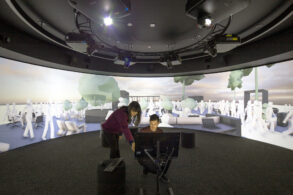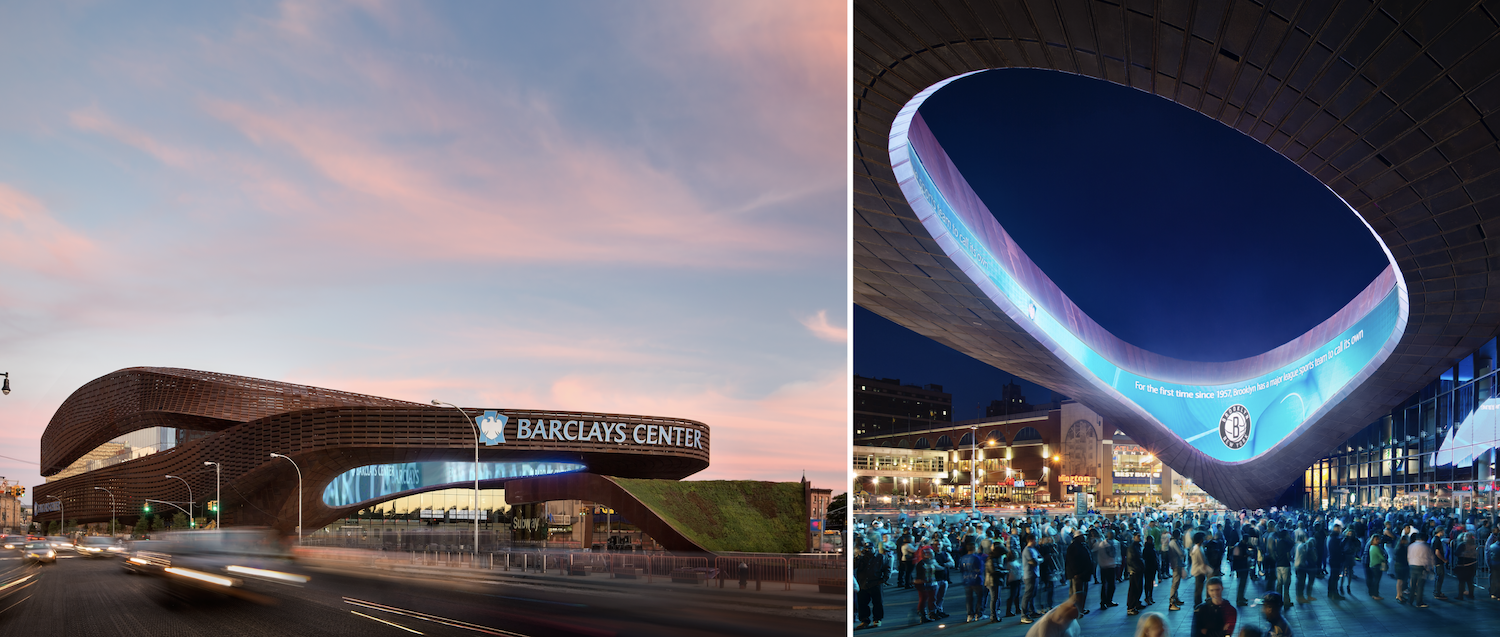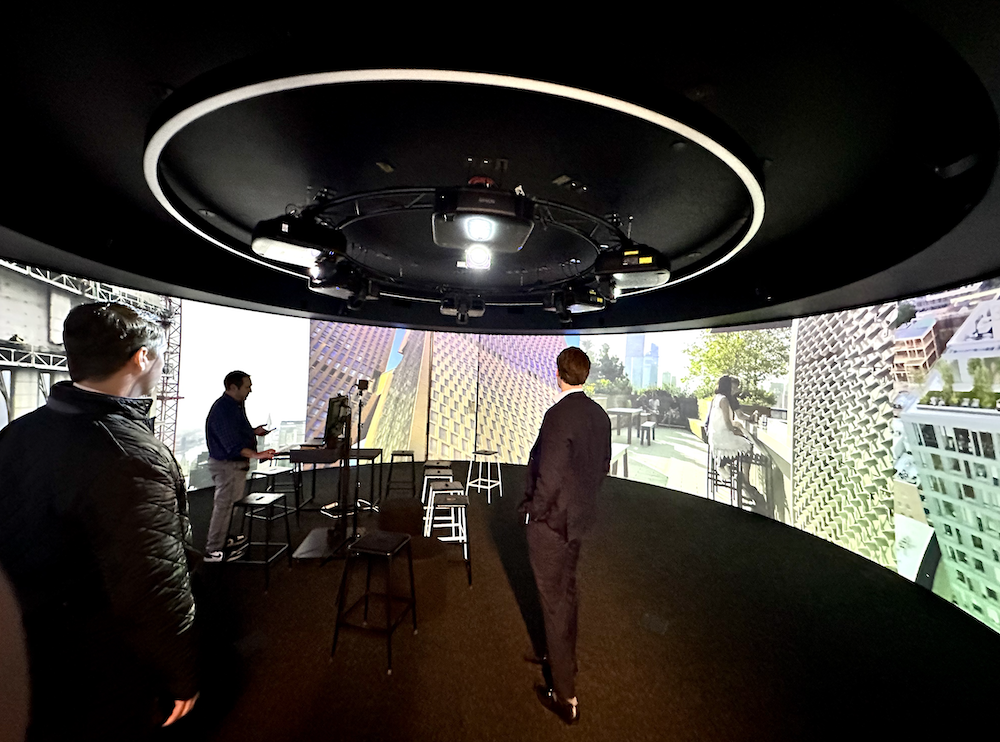
Buildings Conference Preview
In construction—just as in any other industry—there are companies that use technology, and there are companies that use technology well. SHoP Architects is a company that may well be in its own category.
Based in New York, SHoP Architects is known the world over for its innovative, multi-functional and often awe-inspiring designs, which have garnered marquee accolades such as the National Design Award from the Cooper Hewitt, Smithsonian Design Museum, American Prize for Architecture from The Chicago Athenaeum Museum of Architecture and Design, Vitruvian Award from the Facade Tectonics Institute, and multiple others from organizations and associations throughout the industry. And while the firm’s work is unarguably the result of good ideas, diligence and know-how, it is through the strategic use and development of technology that these plans are so effectively brought to fruition.
“Technology is in our DNA,” says John Cerone, principal and director of virtual design and construction for SHoP, who’s been with the firm since 2008. “It’s what brings people like me here.”
Starting SHoP’s Internal Tech Revolution
Cerone, who holds a Master of Architecture degree from the Columbia University Graduate School of Architecture, Planning and Preservation, was initially hired for his unique skillset around the use of 3D modeling.
“I had a specialty in specifically leveraging those sorts of technologies—building information modeling and the like—for better enabling the construction process,” Cerone says.
In the decade-plus since Cerone was brought on to spearhead the development of SHoP’s virtual design and construction ecosystem, the firm has experienced something of an internal tech revolution, with new and novel technologies not only being adopted but proprietarily developed and implemented—all in service to SHoP’s overriding mission of building structures better.
A significant catalyst for this revolution, Cerone says, was the firm’s work on Brooklyn’s Barclays Center.
Limited on time and budget, Cerone and his admittedly lean team developed what was, especially at the time, a unique digital model that included unprecedented amounts of actionable information, including design and delivery instructions for the 12,000 unique facade panels the Center ultimately required. Construction began on the 19,000-seat, 670,000-square-foot arena in 2009 and it was up and running by 2012.
“We learned a lot of lessons,” Cerone says. “We learned that technology in construction could be more than just superficial—that we could use technology the way the aerospace or automotive industry uses it. Not just to plan but to better deliver and execute a project.”

Embracing Technology Effectively
Today, Cerone and his team of computer scientists and tech specialists are continuing to push the boundaries of what is capable in construction through technology, focusing on application in all that they design while simultaneously building a tech infrastructure that connects and supports the various stakeholders of a project throughout its planning, design and construction. He’s earned a lot of insight over the years, and in his recent interview with BuiltWorlds, was kind enough to share some of those lessons and how they’re currently being applied at SHoP.
Develop Technology Together
While SHoP relies and has relied on a variety of publicly-available technologies—such as CATIA, Rhino and Unity, to name a few—developing technology internally has become a key part of the firm’s digital ecosystem. What’s important to note, Cerone says, is that SHoP is developing tech not simply for the sake of having it, but rather with a keen focus on improving processes throughout every phase of construction.
“The way we execute technology is in applied design,” he says. “We have a few people that develop tools, but those tools are ultimately fit-tested and augmented by people on project teams. We try not to design in isolation, or build something too heavy without immediate use or feedback.”
Cerone and his team are constantly communicating with other project teams and professionals in the field, working to identify potential problems to solve through technology as well as existing issues with the tech that’s already been deployed. SHoP approaches tech development this way to avoid inefficiencies and parallel work. As Cerone explains, you don’t want to build out an entire platform that solves a problem that’s unique to a single person or project, or try to solve a problem that another team somewhere else in the company is also trying to solve. “That would be silly.”
The goal is to find problems or inefficiencies that happen with enough frequency that they warrant the time necessary to solve them digitally.
“We encourage questioning or challenging or proposing methods of addressing a solution. You have to make something that adds value,” Cerone says. “Then you build that out and incorporate it into the bigger platform.”
Integrate and Build Towards the Holistic
The idea of a “bigger platform”—one in which the company’s tech solutions are all integrated into a single infrastructure—is fundamental to SHoP and Cerone’s long-term digital strategy and, in some respects, guides the adoption and development of tech.
“We believe it’s the future,” he says. “We are developing our own platform, or digital infrastructure, that will ultimately achieve the sort of holistic way of working that we know is inevitable.”
“We encourage questioning or challenging or proposing methods of addressing a solution. You have to make something that adds value"
Cerone imagines a future in which architects design on the same platform that builders will use on site during construction: A platform accessible and applicable in ways that remain true and unique to the user’s purpose without sacrificing functionality, and that is just as effective on a desktop as it is on a mobile device.
“For mobile, we’re doing a lot of work with unity,” Cerone adds. “It has a great 3D ecosystem and it's well suited for developing mobile applications.”
Focus on Making Things Accessible
Mobile applications are an important part of Cerone’s vision for his all-encompassing digital infrastructure because, as he explains, “Everyone already has them.”
It’s indicative of a deeper effort to make things more accessible—which can be difficult when your users require different things from the, ideally, same platform.
“We’re working in 3D environments that clients and other stakeholders aren’t trained in, and shouldn’t have to be trained in,” he says. “So we have to create a nice way of immediately simplifying things from our design program to something more like a mobile application.”
Part of that effort is to not over complicate things that are already inherently complicated. An example Cerone gives is using logic to simplify processes that, though time-consuming, are fundamentally replicable.
“For instance, our expertise isn’t manufacturing, but when it comes to extruding terracotta or sheet metal, there is a clear logic behind those production processes that can be described through a digital model,” Cerone says. “In understanding that, we’ve gotten better at mapping things like what material applications lend themselves well to a particular design. And we can apply that at any scale.”
Another example Cerone gives is building a program that’s able to right-size to a particular user, whose job tasks may vary greatly.
“The more illustrative and intuitive we can make a technology, the less miscommunication there is and the more people are going to understand the project,” he says.
That means building different interfaces for user groups that eliminate or add functionality based on their respective requirements for the platform overall.
At SHoP, the firm has an innovative “360 room,” which, indicative of its name, is a room fully encompassed by screens. Cerone says that helps in developing these unique types of layered interfaces. “It lends itself well to that sort of task,” he says. “We can walk through how it feels in our 360 rooms.”

Have a Vision for the Future
Where SHoP, Cerrone and his team ultimately have a leg up on much of the industry is that they’re constantly looking ahead. Look at the front page of SHoP’s website and you’ll see the line, “our work is in the future.” And it is.
The firm is constantly incorporating new technologies into its work and processes; and Cerone is always keeping an eye on what’s new and innovative, or talking with the company’s various project teams to get insight into burgeoning problems or fresh takes on old ones. One area in which he sees a lot of tech potential is in gaming engines.
“We’re doing a lot of work now with the Unreal Engine, and it makes a lot of sense,” says Cerone. “Game engines have historically been more about aesthetics and immersion, while CAD/CAM systems have been about precision. But we’re increasingly seeing and believing that it doesn’t have to be a mutually exclusive thing.”
There are huge “geometry pipelines” in gaming engines, Cerone explains, and the systems have been designed to manage huge amounts of data.
“These gaming systems are converging with the design process,” he says. “The result can be carefully curated communication around the design of complex projects and the built environment. It can be more fun and more real time. I think we can do both.”
Still, regardless of whatever new tech SHoP is incorporating or Cerone and his team are building out, the fundamental driver behind it all is: do it well.
As part of BuiltWorlds' Buildings Conference in New York, May 22-23, Cerone will lead a walk-and-talk through the SHoP studio and provide an immersive view into SHoP’s culture of making and innovating.
Attendees will experience some of SHoP’s cutting-edge visualization technologies, explore building design and delivery tools, and get a sneak peek of some emerging technologies and applications that SHoP is developing.
Additionally, Cerone will speak on the panel "Shaping the Future of Digitally Connected and Sustainable Cities" moderated by Melissa Marsh, Founder and CEO of PLASTARC. John will be joined by Bernd Oswald, Co-Founder and VP of Business Development & M&A with Gropyus, Paul Doherty, President & CEO of The Digit Group (TDG), and Pallavi Mantha, Associate - Climate and Sustainability with Arup.

Discussion
Be the first to leave a comment.
You must be a member of the BuiltWorlds community to join the discussion.